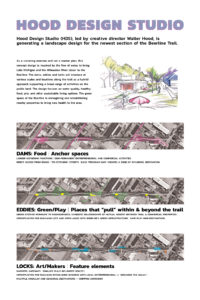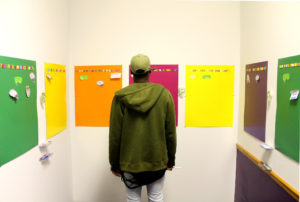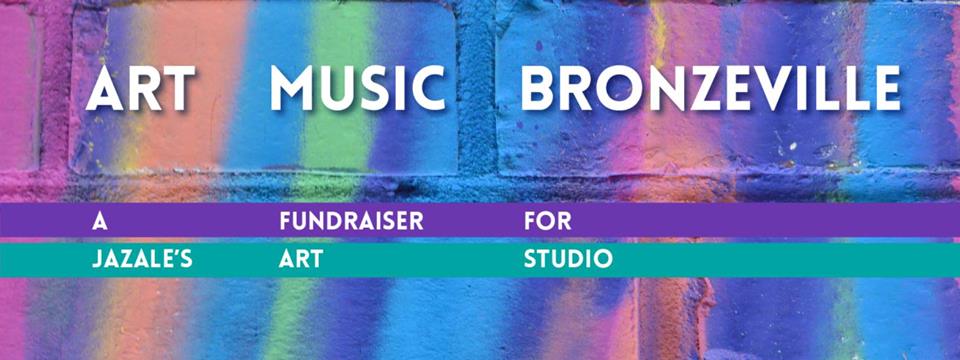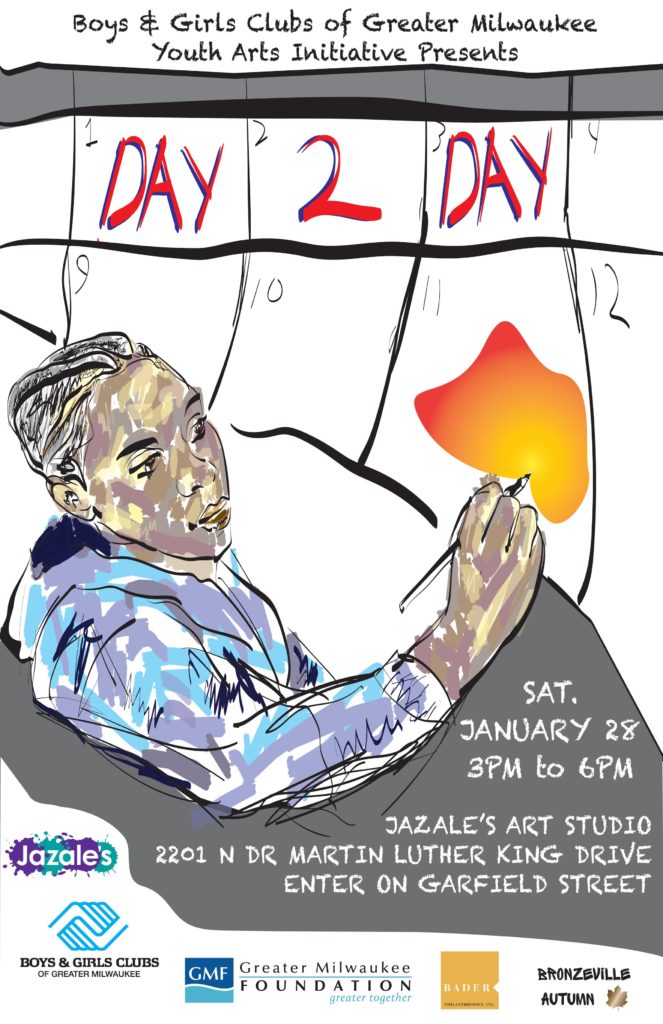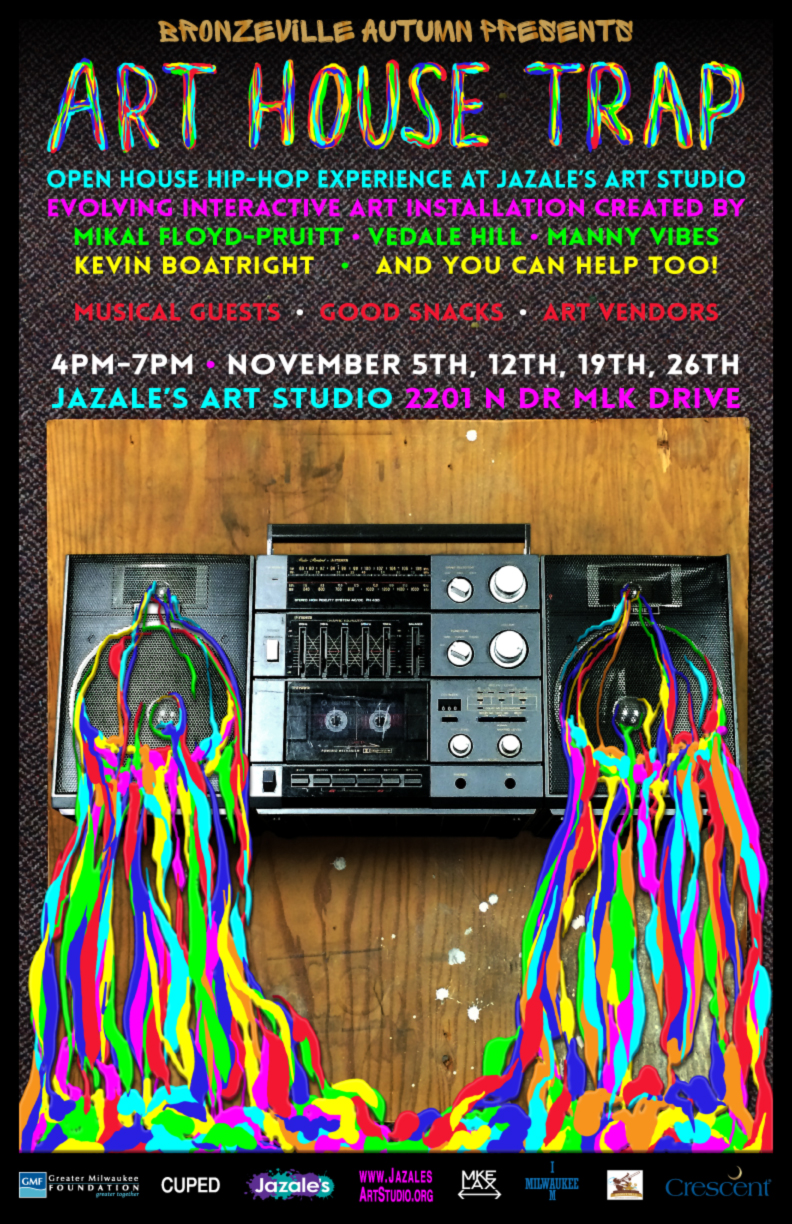Conversations are a series of MKE<->LAX residency reflections produced by artist, writer, and former MKE<->LAX resident Katie Loughmiller. To read about Katie’s experiences in Milwaukee, please visit her blog Love Notes From Milwaukee.
Tracee Johnson, another East Coast transplant in Los Angeles, is a socially engaged artist who I had the great fortune to meet while attending graduate school in the Public Practice program at Otis College of Art and Design. We quickly formed a friendship and while our art practices seemed extremely different, we were eager to find a way to collaborate with one another. Our passion for creating and editing videos helped us find a common ground for communication and telling a story as one. Through experimentation, we created a partnership called Green Box Lab. One of our main goals through this collective is to create more effective and efficient partnerships. We’ve been particularly focused on remote collaborations after I left Los Angeles three years ago.
In Los Angeles, Tracee co-founded and manages The Little House Gallery while simultaneously being the main artist-in-residence. The Little House Gallery acts as an artist residency, project space and gallery. It’s ever evolving and I was lucky enough to spend a week there in January 2016 to launch the first iteration of my performance piece called perception.
This past November, I finally got to host Tracee in the city I was living in! Tracee was an artist in residence for MKE<->LAX to explore how her LA-based practice might translate in Milwaukee, attend the initial Designing Equity intensive with Anne Bray and to hold a brand new Green Box Lab experiment! It was exciting to have my dear friend and collaborator in my new home-base for the first time and see Milwaukee through a fresh pair of eyes.
Let’s start with your very first impressions:
This might sound weird but the airport made quite an impression. It was refreshing to walk through an airport and see nobody. I just thought, ‘Wow, people are home, living their lives and hanging with family.’ The airport in LA is always so busy, almost no matter what time you arrive or leave. The Milwaukee airport has a function but it’s not a place of business and in LA, it is a place of business.
The next day, driving through the city, I didn’t expect to see so much development going on but there was. I was very aware of the new condos being built. Of course, I took so many photos of all the old buildings – all the old brick and stone was beautiful.
One of the first things I remember you doing when you moved to LA was mapping out how little green space there is in LA. I noticed when you were in Milwaukee you kept pointing out and shouting, “Look, there’s a park!”
You’re right, I was very aware of how much green space was everywhere!
I’ll be honest, I moved through a lot of the city in a short amount of time so I did feel a little discombobulated and lost. When I came home I studied maps to relocate where I had been. I still feel an overall lack of understanding of the city. The Beerline Trail was interesting to me – one half of it being industrial and the other half rooted in a neighborhood. In my mind, I don’t understand where they connect. How and why do people access the Extension? It felt like it was in the middle of nowhere! I’m excited to see how the two parts of the trail end up connecting.
In Bronzeville, I was very intrigued by the scattering of spaces that exist. The pockets of left over space due to the removal of houses and how those spaces could be pastured or reinvigorated by the community. There was so much potential to be used as the threads of the community.
I know you could talk about space for days but let’s move on, what were your impressions of the people you met?
First, it was just nice to go somewhere where I had this instilled base of friends. At the intensive I did get to meet people who were outside of this group. At first I questioned if I should join the intensive since I arrived late on Friday and I had missed the first evening session. As soon as I got there Saturday morning, however, I didn’t feel that way anymore. Immediately people came up to me, asked me who I was and offered me breakfast! That was really nice. And even the night before when we went out to a bar (in Riverwest) that crowd felt really comfortable and casual – which I liked. And this probably had to do with where we were but it also felt eclectic. I appreciated the eclecticism of both the people at the bar and the group of people at the intensive.
Of course there was me, but there were quite a few others who work in Milwaukee who you’ve only known in an LA context. I’m curious what it was like to see/work with these folks in Milwaukee?
In Milwaukee it felt like there was more at stake. Maybe that’s because there’s more bias and discrimination. I’m obviously not completely aware of the social scene but through the intensive I gathered that in terms of business development for artists, economy and even just people relating to each other – it felt a little backwards. There are still problems in Milwaukee that feel like they shouldn’t be problems anymore. In general, it felt like the progress is slower there. Not that anywhere is perfect, every city has its issues, but in Milwaukee it just felt like people are trying to fix things but having a difficult time doing so.
I also want to make time to talk about our stuff! Remember we held a workshop? What were your thoughts on that?
Oh yeah! We should remind people, including ourselves, that we did it! It was almost better than I expected. Not that I thought it was going to bomb, but I think we could develop it even more. People were eager to dive right in.
Experimenting feels easier in Milwaukee, any ideas why that could be?
I think for one, it’s more comfortable and the expectations are lower. In LA, there is so much competition that the expectations are higher. There’s a much stronger support system where you are. You fell into this robust art community who supports each other and now you are a part of it. And when I was there I felt like an extension of you and Sara. Therefore, I was family. That just doesn’t exist as much in LA. We have friends, of course, but everyone in LA is hustling – but it’s way more of a tribe in Milwaukee.
I’ve thought a lot about how easy it is to convince people to give others a chance. In Boston and New York, this is not the case – we’re skeptical of everyone! Any thoughts on this in terms of Milwaukee and LA?
I spent four days in Milwaukee and feel like I have more true friends there than I do in LA and I’ve been here for four years. That’s literally the truth. I mean, I’m sure if I stretched my mind I could come up with a bunch of friends here but it’s a different thing. I feel like I landed in Milwaukee and I was given a community of friends/artists and in LA it’s still a struggle to find that every day.
Why do you think it’s so hard to find that community in Los Angeles?
It’s difficult to understand Los Angeles fully because it’s so big. I guess you can say this about any city compared to LA, but Milwaukee is a lot denser. You’re walking through places or if you’re driving it’s much shorter distances. In Milwaukee, you’re much more surrounded by different parts of the city all the time. In LA, it’s much easier to skip over neighborhoods.
Definitely, I think it’s easier to form bonds with people because it’s much easier to run into them over and over. Of course, that isn’t always a great thing either.
Yeah, it seems like there is less anonymity and everyone is more exposed.
You also had a unique experience where you got to meet and know Milwaukee artist Monica Miller during your visit, and then host her at your space at The Little House Gallery in Los Angeles almost immediately when you returned. How was that?
For me it was so nice to have these back to back experiences. Four days in Milwaukee and then to have Monica here for five. We both hosted each other and we both got to see each other’s lives. And since the visits were so close together, we picked up right where we left off.
Not only did we get to see each other’s professional lives but we also got to socialize in both cities. I want to try and do more of this! It was nice that we had at least one night to see the social scene and not have to worry about all the “business.” It felt like a more genuine exchange.
What could you see yourself getting involved in here?
I’d really like to engage with West North Avenue. It’s a major road, a lot of commercial spaces and a border in some ways of the Bronzeville district. I’m interested in the amount of green space and non-green space. I’m interested in doing a temporary group installation along North Avenue that would help visualize what could happen in a more permanent way. Having experimentation of play on that street could help define how it could potentially become a more pedestrian friendly space. It would be fun to play with nontraditional, non-formal uses of streetscape.

